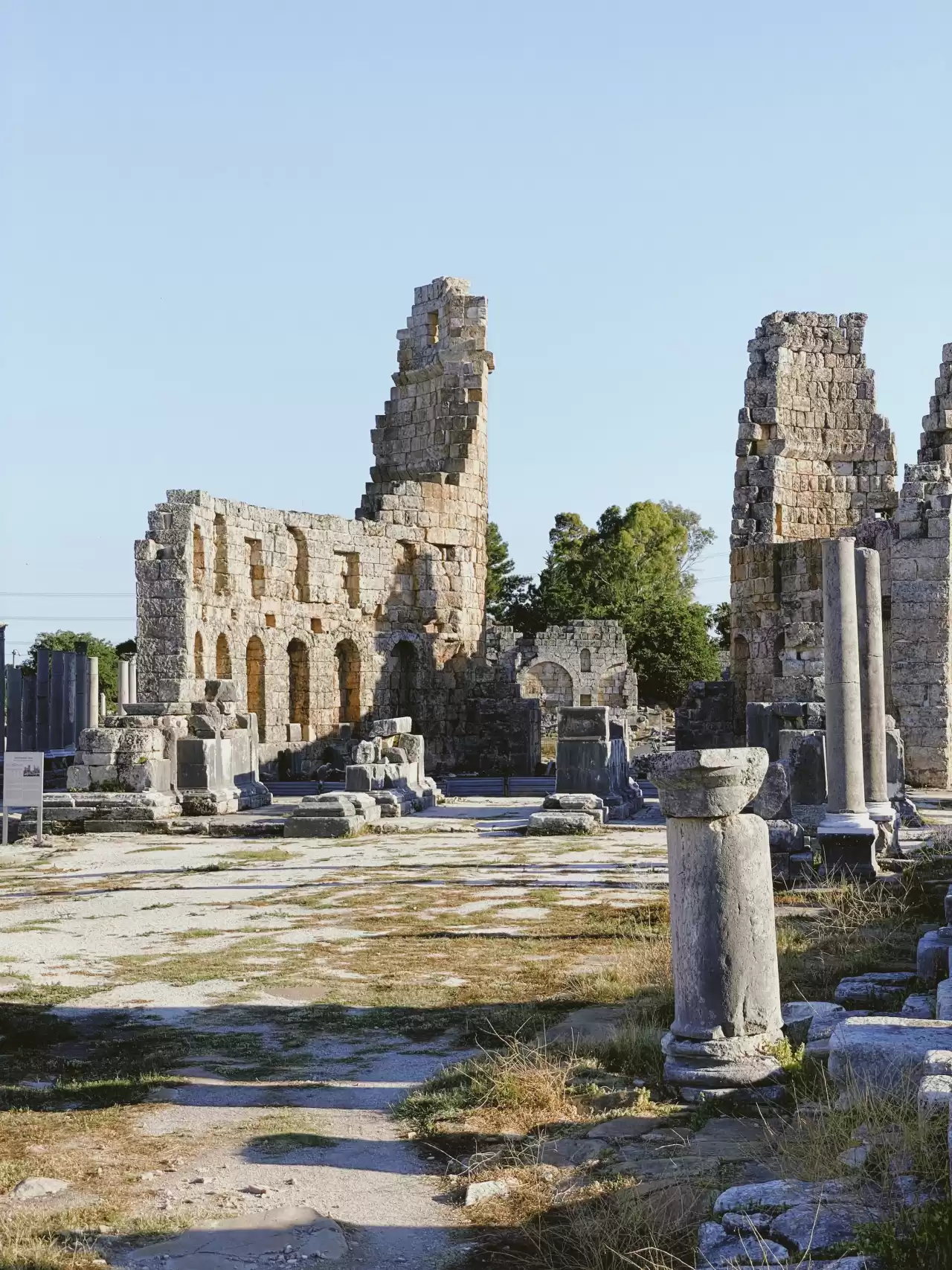Perge Ancient City: A Journey Through Time and Architecture
Perge Ancient City: A Journey Through Time and Architecture
Located 18 kilometers east of Antalya, within the boundaries of the Aksu district, Perge is an ancient city that once served as the capital of the Pamphylia region. When we look at the history of Perge, it is believed that the acropolis might have been established during the Bronze Age. Throughout the Hellenistic period, the city was considered one of the wealthiest and most beautiful cities in the ancient world. The famous Greek mathematician Apollonius was also born in this city, known as Parha in ancient times.
The history of Perge should be studied in conjunction with the Pamphylia region. The region contains caves and settlements dating back to prehistoric times. The most famous of these caves is the Karain Cave, and other notable prehistoric settlement areas include Öküzini Cave, Beldibi, Belbaşı rock shelters, and Bademağacı. These examples of settlements indicate that the Pamphylia plain has been a favored and suitable location for human habitation since prehistoric times. The research conducted by Wolfram Martini shows that the acropolis plateau has been used as a settlement area from around 4000 or 3000 BC onwards.
Archaeological findings, such as obsidian and flint artifacts, indicate that Perge was used as a settlement site from the Neolithic and Copper Ages onwards. The prehistoric burial found on the acropolis is identified as the first prehistoric burial in the Pamphylia region. Pottery findings in Perge show similarities only with the examples from Central Anatolia when compared with other Anatolian findings.
Throughout its rich history, Perge has been home to many significant structures. In the mid-1st century, Gaius Julius Cornutus built a Gymnasium and Palaestra during the reign of Nero. Perge was initially merged with Galatia but later separated into individual provinces by Vespasian. Vespasian granted the title of a city with Neokoros status to Perge, and Emperor Domitian bestowed Asyl authority upon the Temple of the Goddess Artemis Pergaia in the city. During Domitian's reign, two brothers named Demetrios and Apollonios erected a victory monument at the intersection of the city's main streets. They belonged to a wealthy family in the city.
One of the most important structures in Perge is its theater. The theater has a seating capacity of about 13,000, with 23 rows in the upper part and 19 rows in the lower part. The fact that the orchestra area is surrounded by railings indicates that gladiator games were also held here. The most fascinating feature of Perge's theater is its stage building, which houses reliefs depicting the life of the wine god Dionysus. These reliefs resemble frames from a movie, illustrating Dionysus's life.
Other significant structures in Perge include the stadium, agora, columned street, Hellenistic gate, gymnasium, and the southern bathhouse. The stadium is considered one of the best-preserved stadiums from the ancient world, while the southern bathhouse stands among the best-preserved structures.
Perge Ancient City promises visitors a journey through time and architecture with its rich history and monumental structures. In addition to the natural beauty of Antalya, the ancient city's atmosphere, steeped in history, continues to enchant history enthusiasts and travelers alike. As an open-air museum carrying the traces of the past to the present, Perge pays homage to humanity's common heritage and shares the grandeur of the ancient world with its visitors.
Featured


Nevruz Holiday Deals to Antalya: Celebrate Spring in the Turkish Riviera
Details
Holiday Deals to Antalya: Experience the Turkish Riviera with Caria Holidays
Details
Fly to Turkey: Your Ultimate Travel Experience with Caria Holidays
Details
Flight Tickets to Turkey: Find the Best Deals with Caria Holidays
Details
Turkey Ticket Price: Fly with Caria Holidays for the Best Deals
Details
Travel Agency in London: Caria Holidays
Details

